ZMF’s latest creation is one of Zach’s greatest, with little to nitpick in terms of design, comfort, or tuning.
ZMF is known for its range of boutique headphones that not only have a distinct design language, but also are tuned towards a specific “house” sound.
ZMF’s last pair of open-backed headphones, the ZMF Verite, were launched back in 2019 and garnered critical acclaim. Even now the Verite are considered one of the best in the TOTL range. Now, after almost three years, we have the Atrium – ZMF’s new headphones with biocellulose drivers.
- Exceptional build quality and design
- High quality stock accessories
- Very comfortable despite the above-average weight
- Sheer tactility of the bass notes
- Inoffensive, warm midrange tuning that resolves well
- Extended treble without grain or abrupt peaks
- Excellent staging, precise imaging
- Good macrodynamic punch and slam
- Easy to modify the sound via additional ear pads and filters
- Extra weight can be bothersome after hours of use
- Not the most resolving headphones for the price
- Microdynamics could be better
- Sub-bass rolls off at the extreme end
- Lower-treble peak near 5KHz can cause some tonal aberration
The innovations in the Atrium include a new generation biocellulose driver, a user changeable mesh that can alter treble presence, and a proprietary damping system that allows granular control of the tuning.
Without further ado, let’s see if the ZMF Atrium can live up to my high expectations.
Company Overview
Based in Chicago, Illinois, ZMF headphones is the brainchild of Zach Mehrbach, who started his headphone-building journey by modifying Fostex T50RP headphones. ZMF headphones was founded in 2011 and In 2014 it became a full-time business for Zach.
From humble beginnings, ZMF has now become one of the de-facto boutique headphone manufacturers. Zach’s love for wood is something unique in the headphone space and gives his headphones their distinct build and design. The company motto is “traditional craft, modern acoustics,” which is reflective of the kind of headphones Zach makes.
Check out their YouTube channel which has some very interesting content and commentary from Zach himself.
Technical Specifications
- Form: Open
- Drivers: 1 x Biocellulose dynamic drivers, Atrium damping system.
- Impedance (Ohm): 300 Ohms
- Sensitivity (dB): 96 dB/mW
- Removable Cable: Y
- Source Jack: 6.35mm, 4.4mm pentaconn
- Cup/Shell Jack: mini-XLR
- Weight (g): 490 +/- 30 g (aluminum chassis, regular grille)
- Additional Features: Available in natural and aged Cherry finishes
Packaging
The packaging is fairly minimal in terms of decorative sleeves. My unit arrived in a plain cardboard box. Opening it up revealed the sizable carrying case that screams “heavy duty”.
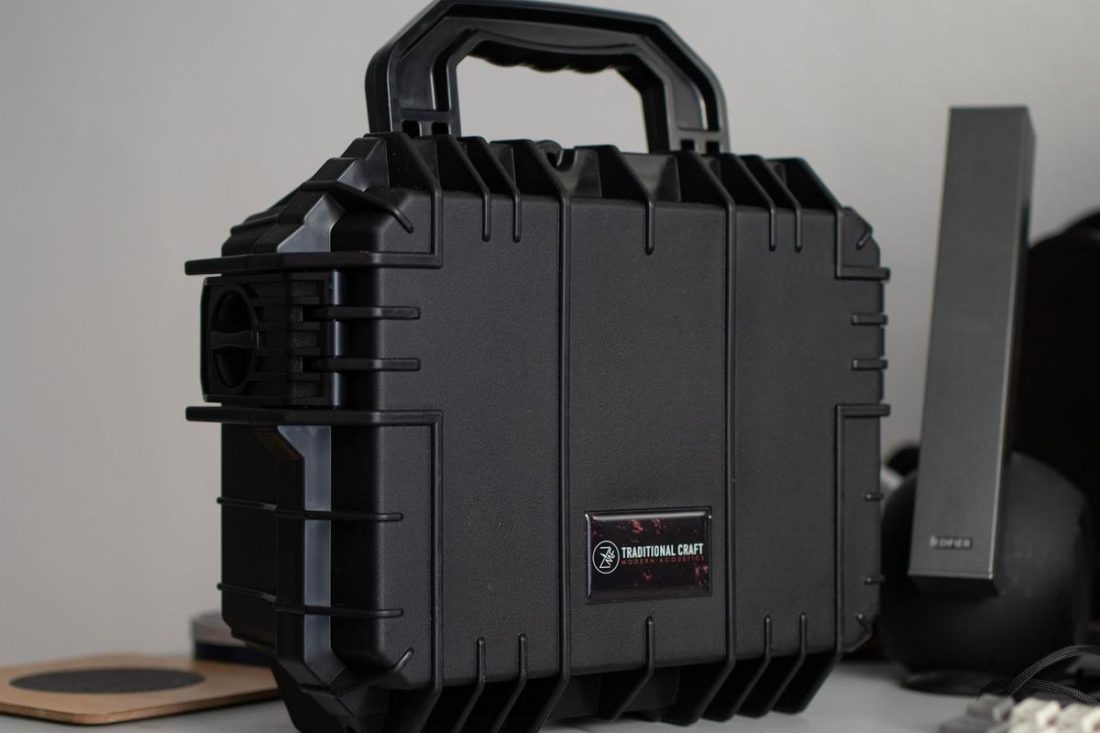
Unlocking the case reveals the headphones themselves, alongside some paperwork, extra earpads, and two cables.
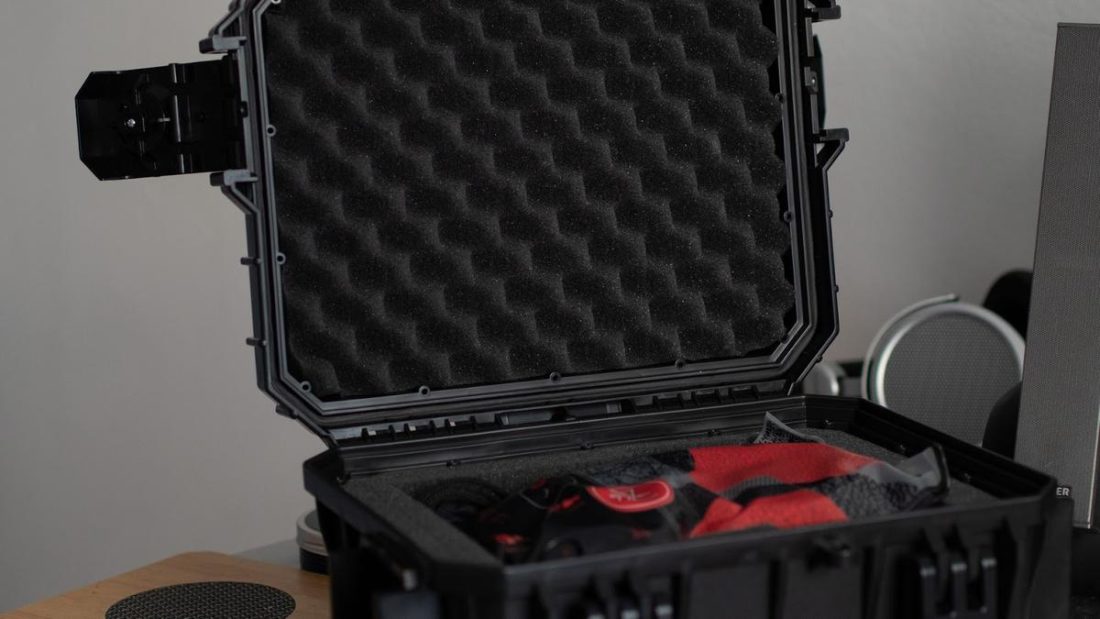
In the box
- ZMF Atrium headphones
- ZMF stock braided cable and OFC cable
- ZMF Universe perforated pads and 1 user-selected set of pads (mine came with the Be2 perforated)
- ZMF owner’s card
- Seahorse case
The stock cable is very good, and I personally don’t feel the need for aftermarket options. The cloth braiding is fairly pliable and you can pick the termination of your choice during purchase.
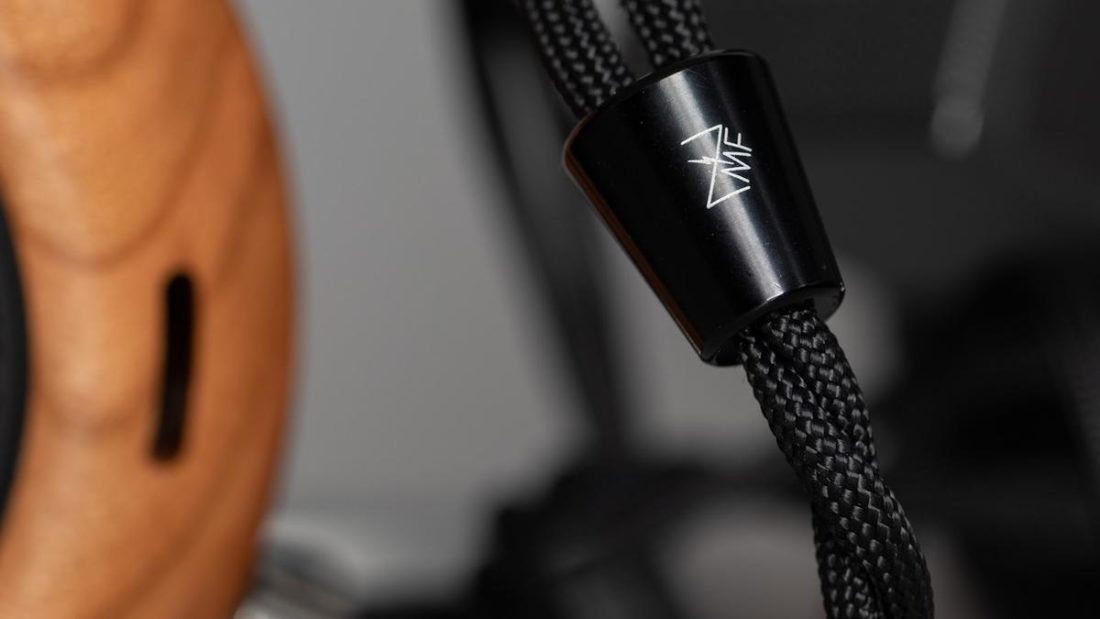
Design
The Atrium are work of art.
From material choices to the venting system and sheer attention to detail – very few headphones stand out in terms of design like the Atrium do.
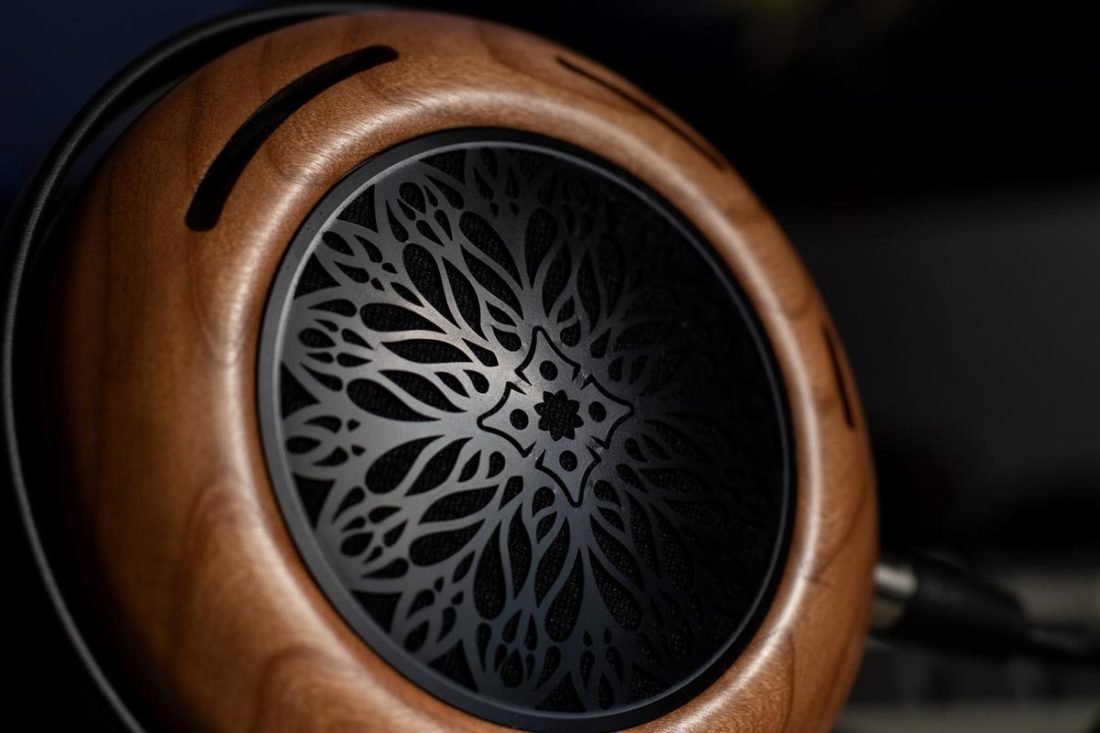
Speaking of materials, it’s all metal, wood, and leather. The cups are polished Cherry wood in the default configuration, but you can choose to have aged Cherry wood as well that has a distinctive brown hue. There are numerous vents around the earcup which are part of the damping system and allow the Atrium to be the most open-sounding ZMF headphones to date.
Buyers can choose between stainless steel or polished copper grilles. Do note that copper grille adds to the weight. The yoke is aluminium and so is the headband which is padded via leather and foam. There is also a leather strap underneath the headband to evenly distribute weight.
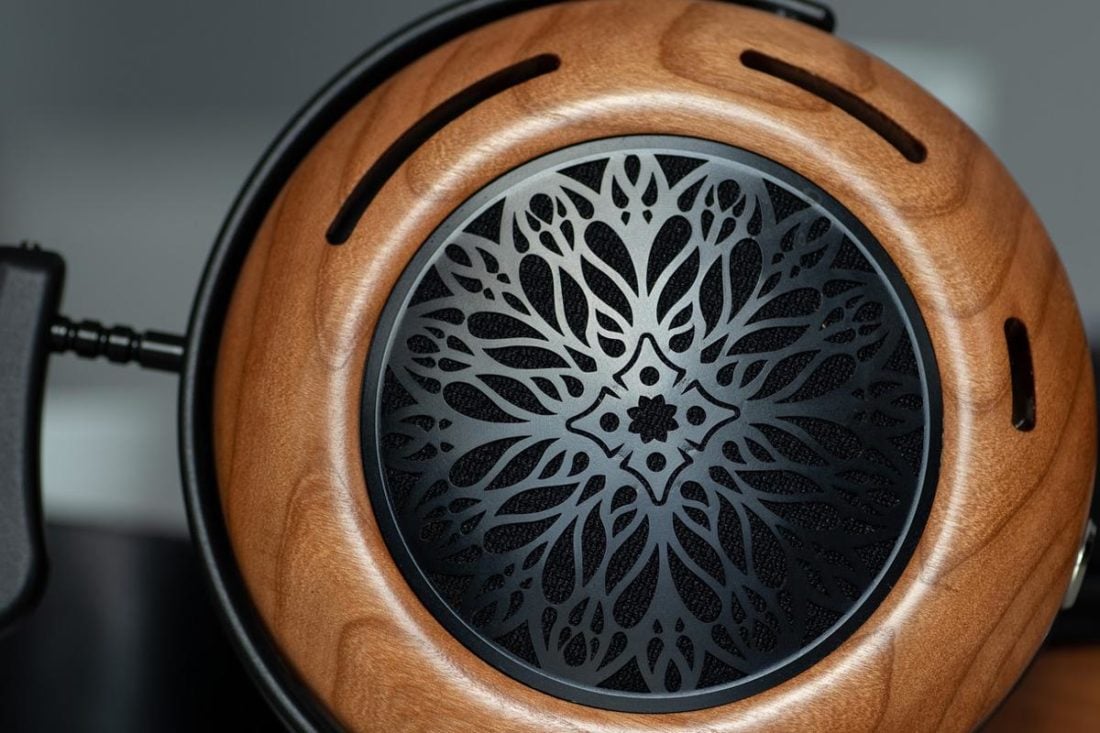
The Atrium use mini-XLR ports which are very robust and allow for easy sourcing of third-party cables.
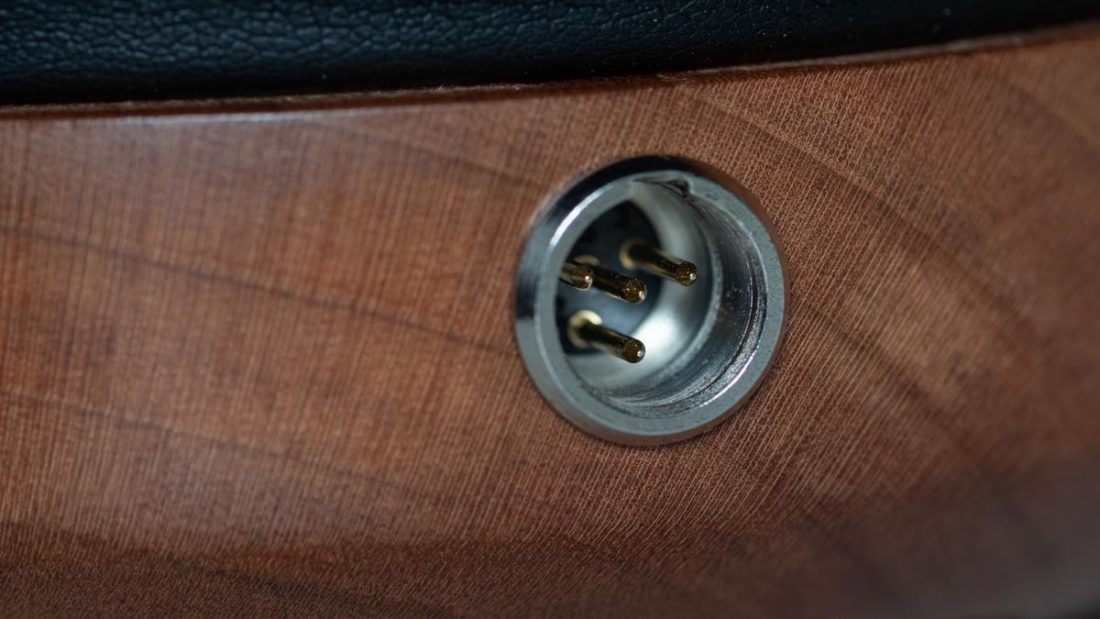
My only complaint is the headband adjustment mechanism which isn’t smooth. At times, you will miss a notch or two while sliding them up or down. Although, once adjusted, they tend to stay in place. The earcups swivel freely along the yoke, so there are no issues fitting larger head sizes.
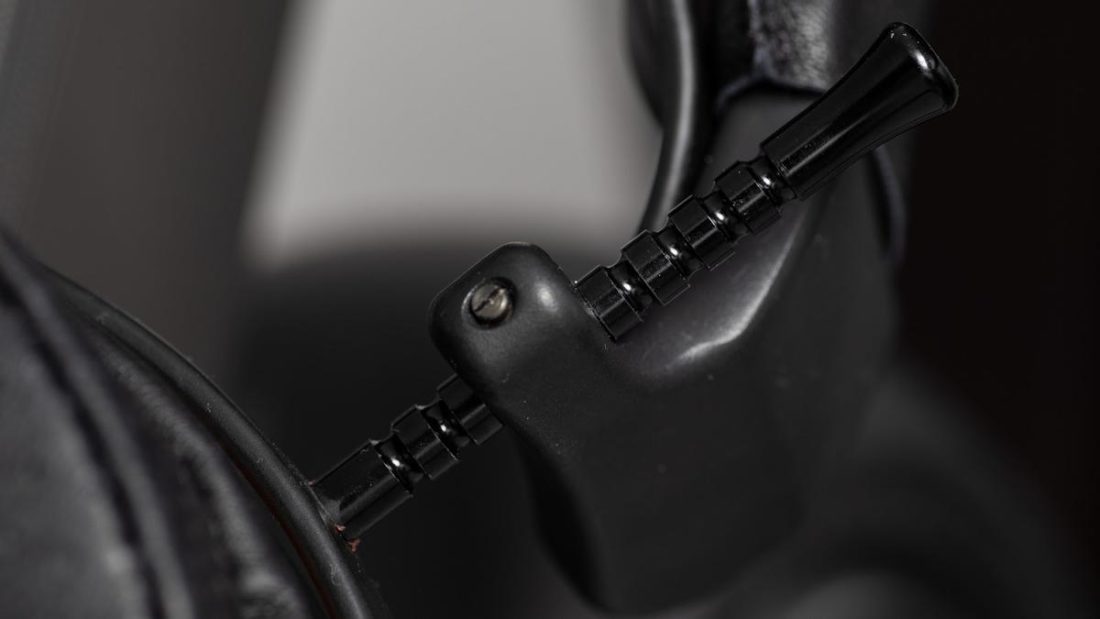
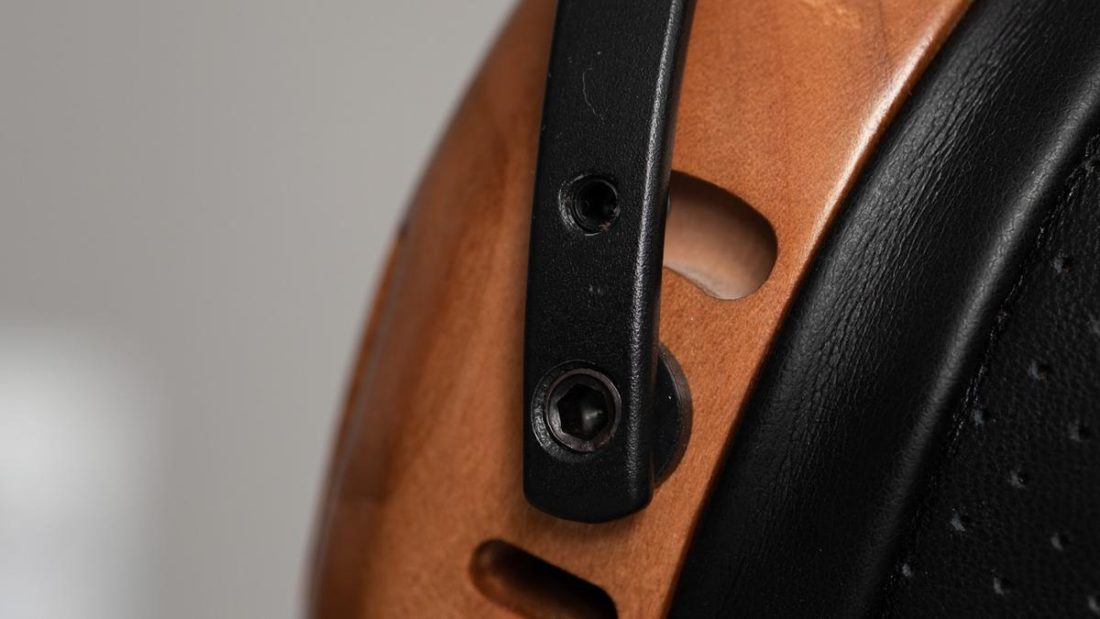
The earpads can be easily replaced, though the “grip” along the edges of the earcups can be too easy to undo. The stock ‘Universe’ perforated pads have a lambskin cover, but there is the option of choosing them in vegan leather.
Overall, the design is fabulous and once held in hand, you come to appreciate how much work and thought has gone into making these headphones.
Comfort and isolation
Despite the noticeable weight of at least 490g (depending on wood and choice of grille), the Atrium are very comfortable to wear . There is adequate padding under the headband so no hotspots are formed around the temple. The earcups swivel and rotate freely to adapt to any face shape and size.
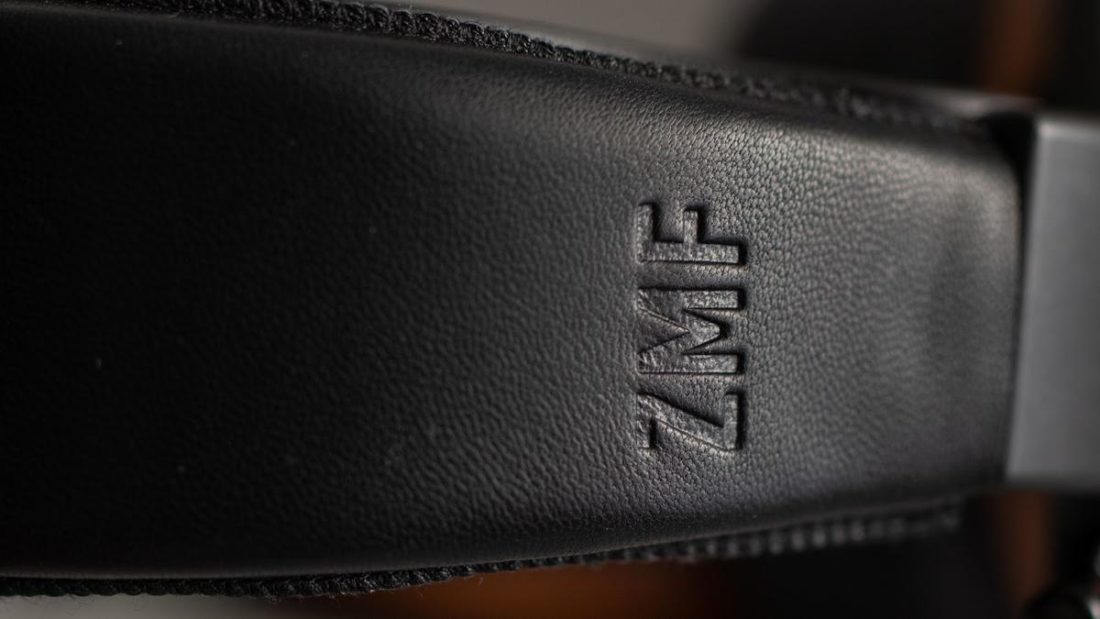
Lastly, the stock Universe earpads are roomy with a very soft and supple surround. The Be2 pads were the most uncomfortable for me due to lower density of the foams, but the Auteur pads were just as comfortable with similarly thick foam insertion. Isolation is non-existent due to numerous vents and an open-acoustic design.
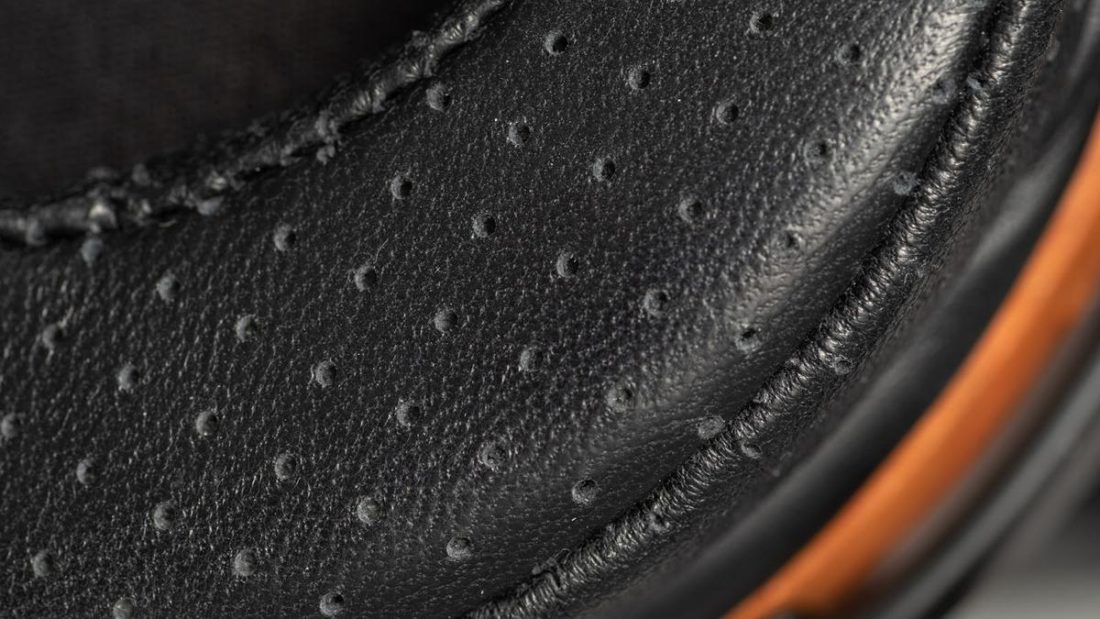
Internals
The Atrium houses a biocellulose dynamic driver with stronger N52 magnets to allow better excursion. The driver can be seen once you remove the earpads and the acoustic mesh sitting in front of the driver.
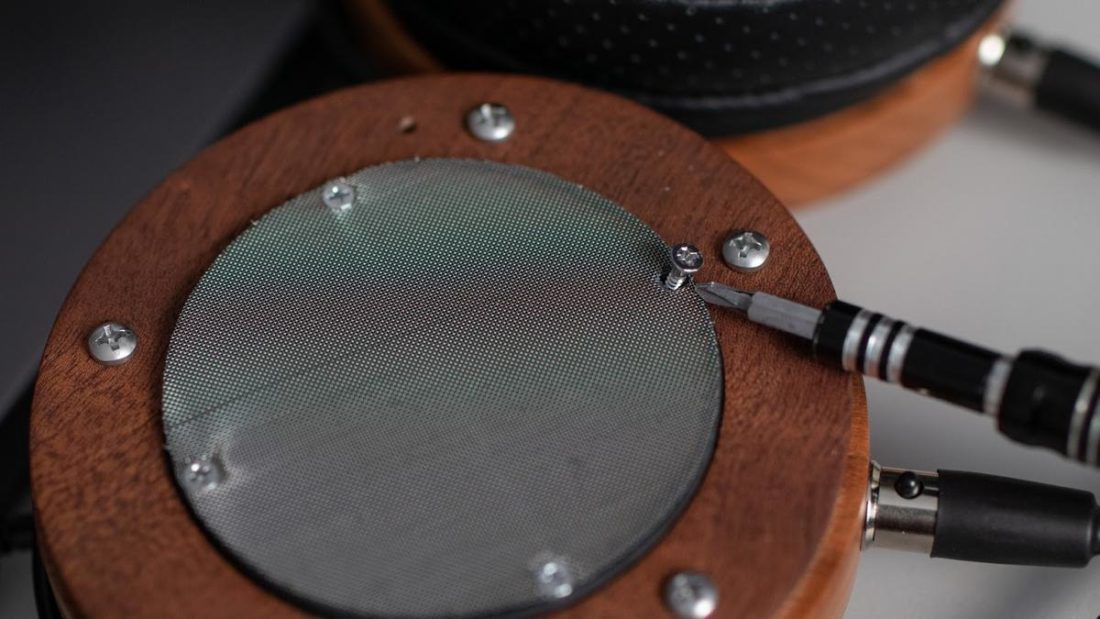
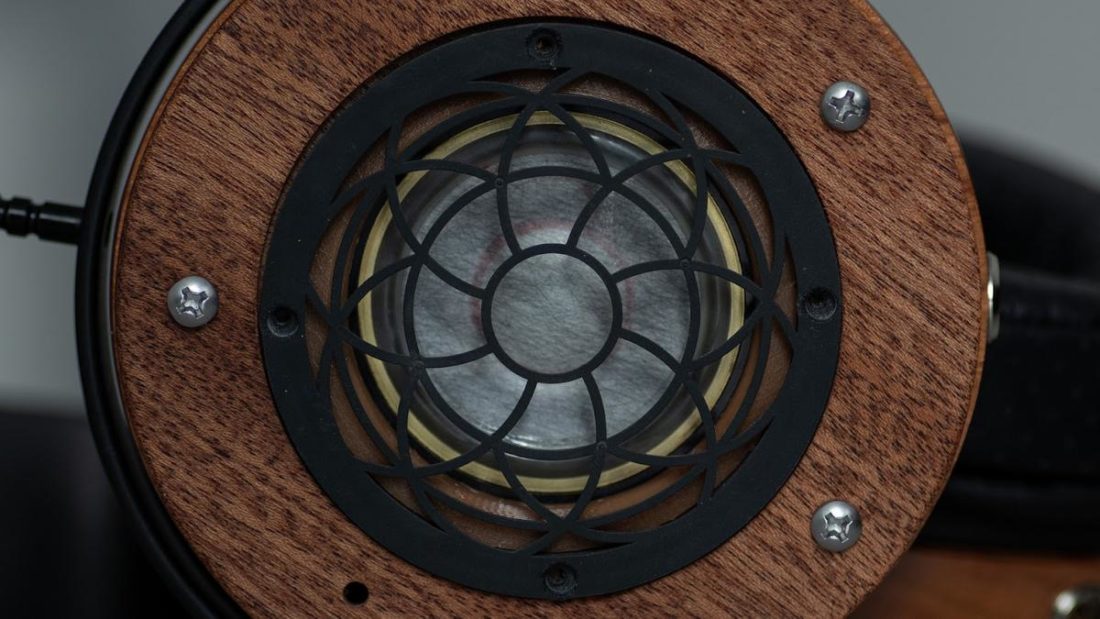
Biocellulose drivers are made out of bacterial cellulose, which is grown using specific bacterias. The resulting diaphragm has high rigidity while being very lightweight, allowing higher excursion and superior pistonic motion.
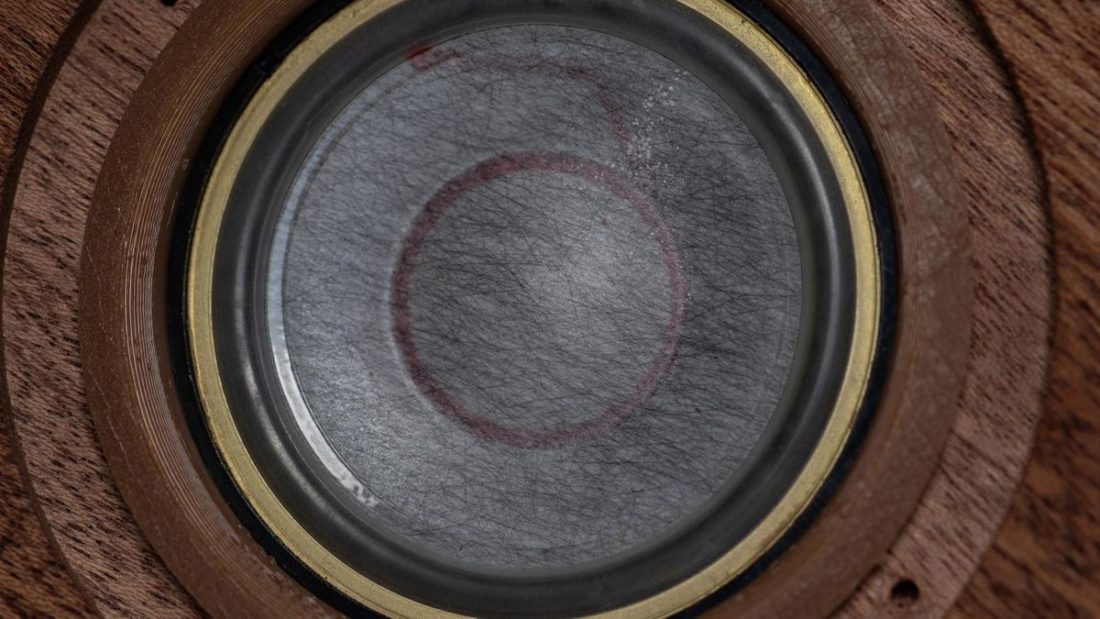
Atrium damping system
Another interesting aspect of the internals is the patent-pending Atrium damping system. There are strategically placed vents in and around the cups to control the airflow for superior driver control. The Atrium system allows an additional layer of control over this, where the damping material itself can be precisely laser-cut and strategically placed according to specification.
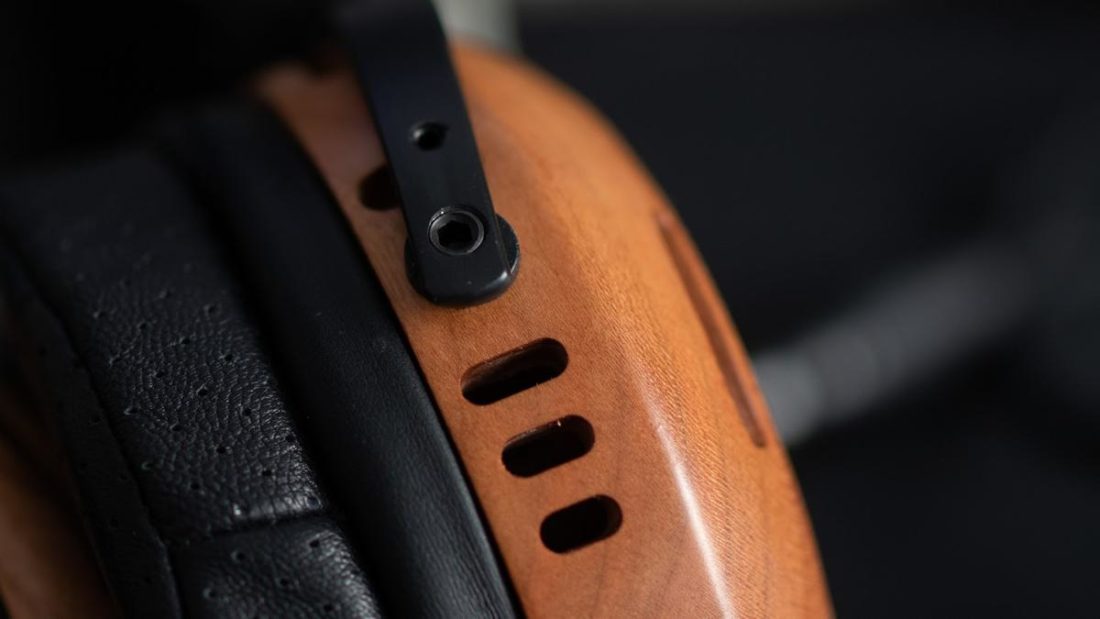
This allows ZMF to optimize the back-waves inside the cups and tune them to specific targets. Everything from the density of the cups, density and placement of the foams, to the use of different damping materials can be integrated into the design process. As such, an unprecedented level of tuning consistency can be achieved.
Vented titan mesh
The mesh sitting in front of the Atrium driver can be replaced (or removed entirely) to alter the treble response. ZMF offers an optional vented mesh that one can swap with the stock mesh for higher 5kHz emphasis.
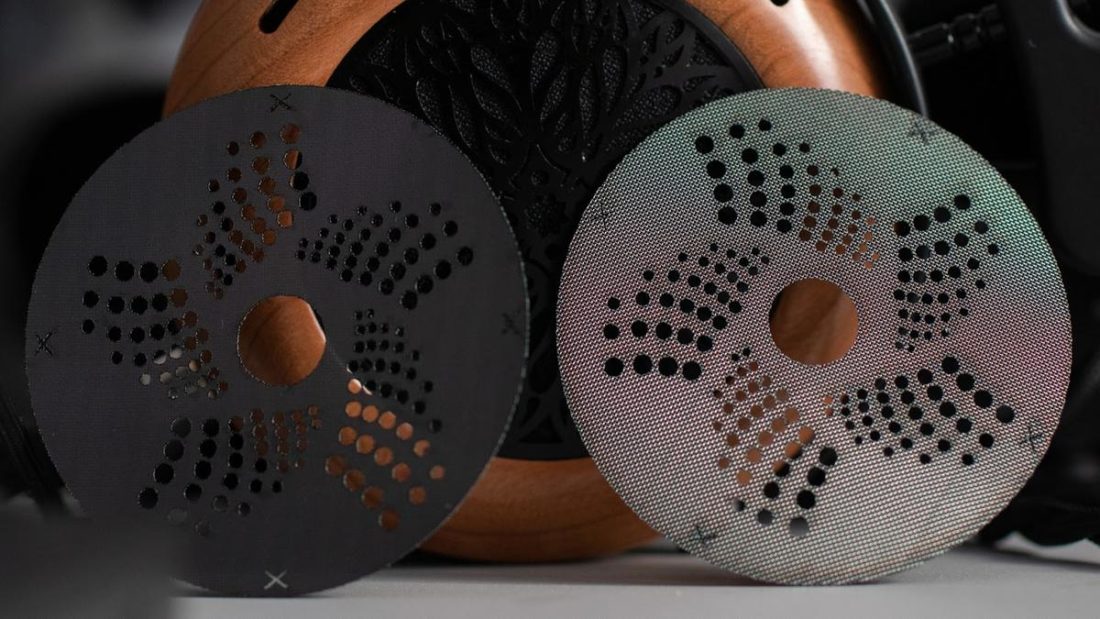
ZMF Atrium Sound
The general sound signature of the ZMF Atrium can be described as warm with natural mids and muted treble.
Depending on perception, some might even describe these as “dark sounding” though I think the upper-treble energy brings enough life in the mix. It’s the mid-treble recession that mostly de-emphasizes highs.
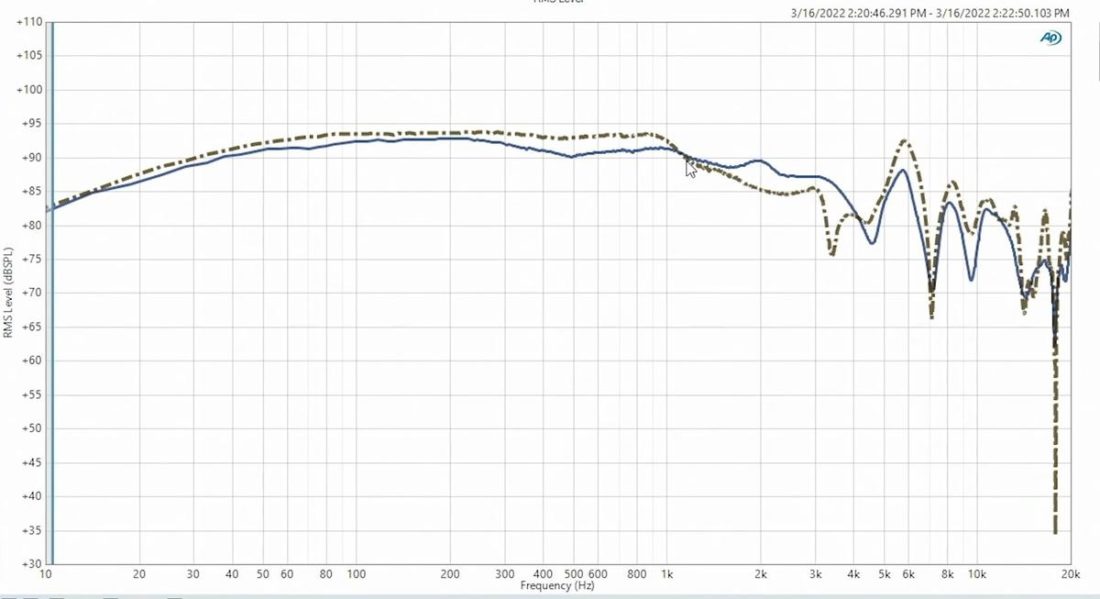
Bass
If I have to use one word to describe the Atrium’s bass, it is “tasty”.
Bass notes effortlessly flow into each other with excellent bass texture. Subtle taps on snare drums can be precisely delineated from the pedals, heavier snare hits, and bass guitars on tracks like American Football’s Where Are We Now.
There is some mid-bass emphasis but it mostly accentuates the lower-mids and adds some warmth rather than adding any veil. The mid-bass emphasis sounds more prominent than it is due to the sub-bass roll-off beyond 40kHz. This lack of rumble is probably the biggest “weakness” in the Atrium’s bass response.
Bass slam is satisfyingly solid with a dense impact. Bass is not as fast as some planars but that’s not the goal here. The Atrium presents bass notes with added weight while keeping the outline of each bass note intact, and that’s a tough balancing act.
Midrange
The mids are the biggest highlight of the Atrium. The warmth from the mid-bass coupled with an even lower-midrange results in exquisite male vocals. Baritone vocals have a heft and presence that’s hardly matched by any of the Atrium’s peers, as heard on Colin Hay’s I Just Don’t Think I’ll Get Over You.
Pianos and acoustic guitars are an absolute delight to listen to on the Atrium.
On Radwimp’s Date, each downstroke “thock” of the piano keys has a tantalizingly real, physical impact. The multiple acoustic guitars on Damien Rice’s Cannonball are rendered with natural attack and decay, as each strum leaves a slight trail that doesn’t disappear outright.
This is not due to the driver being slow, rather that’s how the song is recorded and only the best headphones and speakers tend to showcase this trait. The ZMF Atrium are one of those rarities. Female vocals are smooth without a hint of shoutiness or sibilance.
I noticed that higher-pitched vocals are slightly smoothed out, which can be an issue for those preferring more clarity and intensity. This can be altered via changing to the vented mesh which has heightened clarity in the upper-mids.
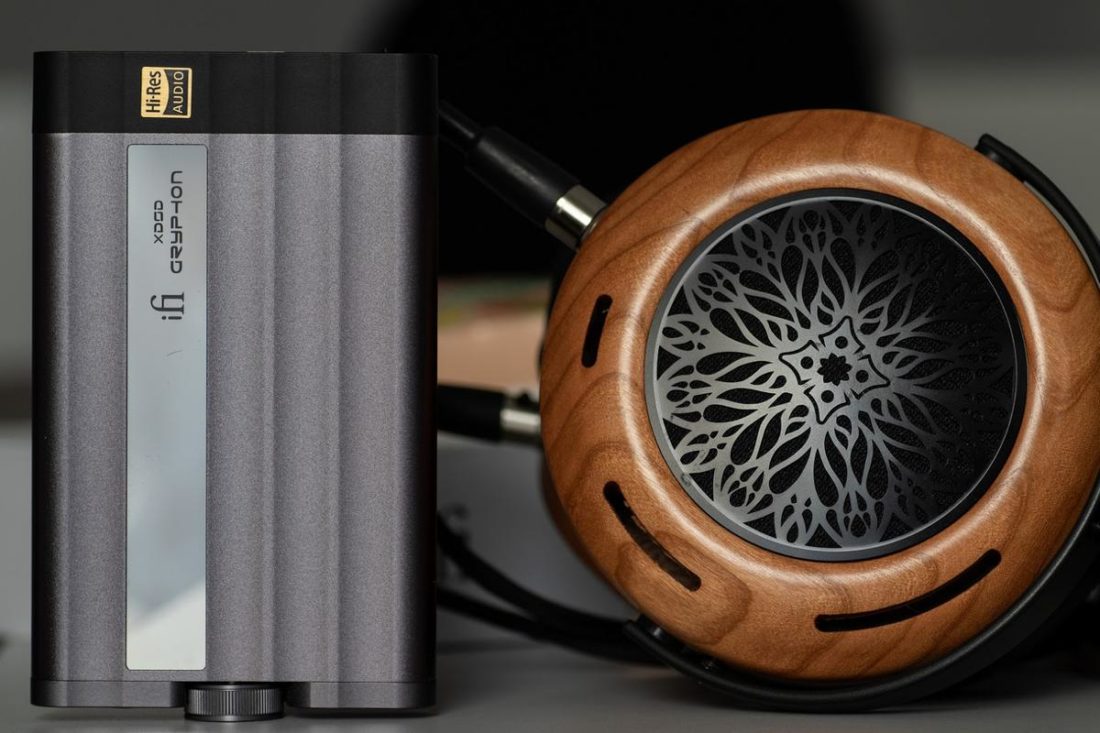
Treble
The treble response is where the Atriums will likely be most divisive.
In keeping with ZMF’s house-sound, the Atrium have de-emphasized treble. More precisely, it’s the region between 7-10kHz that is muted. The treble picks up noticeably after 10KHz and adds some air into the mix. This helps in properly reproducing resonances.
The mid-treble recession results in a lack of resolving capacity. On the plus side, this helps in cutting down sibilance and makes the Atrium very suitable for long-listening sessions. On the other hand, there are some oddities in how cymbals sound due to this tuning direction.
Cymbal hits and hi-hats have a pronounced initial attack and the resonances linger for a while, which is great. However, the sound between the initial hit and subsequent decay often appears dampened. This somewhat softens the treble note and might take away the “rawness” of certain metal tracks, e.g. The Ocean’s Mesopelagic.
Overall, the treble can be be a hit or miss with the Atrium and perceived treble quality will largely depend on the listener’s preferences.
Soundstage and imaging
Staging is excellent on the Atrium. They are the most open-sounding ZMF I have listened to so far and they can render the atmosphere of a concert hall fairly well. Amber Rubarth’s Tundra highlights the Atrium’s strength in this regard, with instruments placed at various depths from the listener’s head.
For the most part, imaging is precise but center-imaging is not class-leading. As a result, the sound projection is still headphone-like and cannot replicate the frontal projection of near-field speakers.
Dynamics and speed
Due to the dense note weight and airy treble, macrodynamic punch is excellent.
These headphones slam, and they slam hard.
Their slam characteristics are different from the best planar-magnetic headphones though, as those tend to have a faster “punch”. Think of consecutive light punches versus one heavy punch from a boxer, if that analogy makes sense to you.
Microdynamics or subtle shifts in volume are not as well defined, sadly. This changes once you switch to the vented mesh, but more on that later. In stock configuration, the small gradations are not picked up as well as I’d like in a pair of TOTL headphones.
Driver speed is about average for the price class, if not slightly below-average. ZMF’s own Verite Open have a faster driver, and competitors have even faster-sounding offerings.
Sound impacts – changing mesh
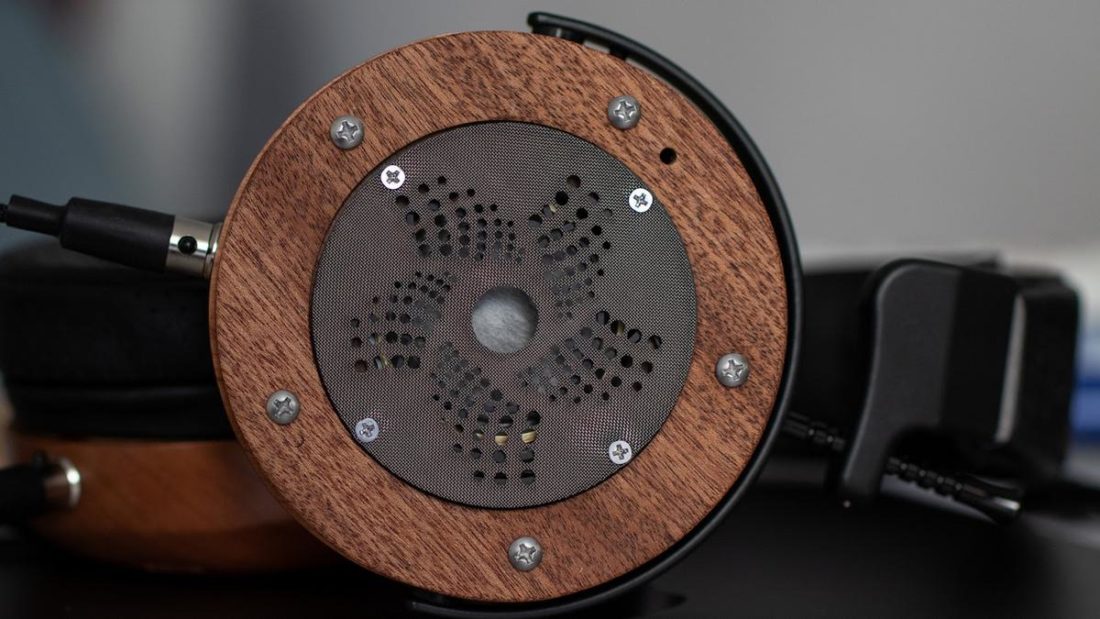
With the stock Universe pads, the differences I found using the vented mesh rather than the solid mesh are as follows:
- More prominent presence region, with a noticeable rise around 5KHz and more emphasis in the air frequencies post 10KHz.
- A more up-front presentation, with vocals being pushed further forward.
- Bass impact feels “less” but I think the quantity is similar, since during sine-sweeps they sounded about the same with similar bump near 100Hz and sub-bass rumble being noticeable from 30Hz onward.
- Staging is also similar, even though the more up-front vocals can make the stage seem “narrower”. The instruments are “spread-out” in a similar manner, so I think stage width and height aren’t affected that much. Excellent staging overall no matter which mesh you use.
- One area where I noticed a more palpable difference is in terms of microdynamics. Subtle gradations in volume level were more readily apparent with the vented mesh.
- Cymbal hits and hi-hats are more prominent with the vented mesh.
The solid mesh has a presentation that is more laid-back and calmer. Notes are denser and have a more physical delivery with the solid mesh as well.
Overall, for my personal tastes, I go for the solid mesh more often than not. An option in-between the solid and vented meshes would likely hit the sweet-spot for me, with less prominent 5KHz and similar level of air frequencies as with the vented mesh.
To summarize: If you prefer a more up-front delivery, with somewhat Grado-like tuning (while not as uneven in the treble) then the vented Titan mesh is a good experiment. Otherwise for most preferences and genres I preferred the stock solid mesh.
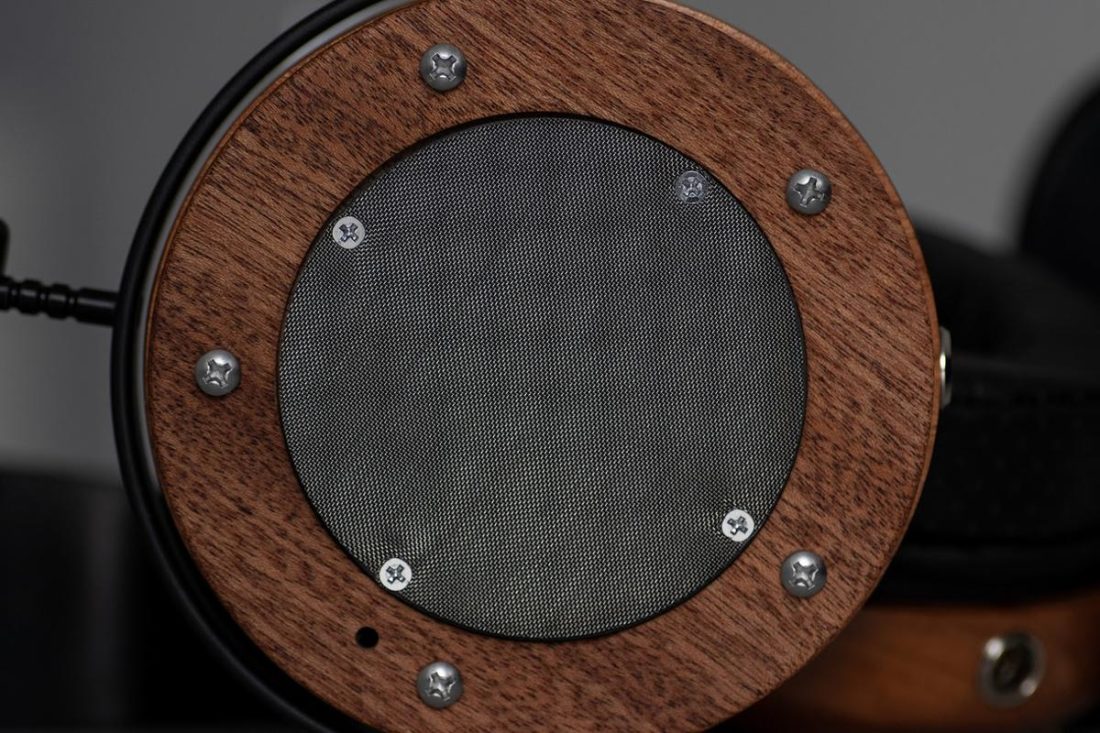
Sound impacts – changing ear pads
During the purchase process, you can choose a pair of additional earpads that will come bundled with the Atrium package. ZMF included both the Be2 and the Auteur perforated pads with the review package, and the following are short impressions with these pads versus the stock Universe pads.
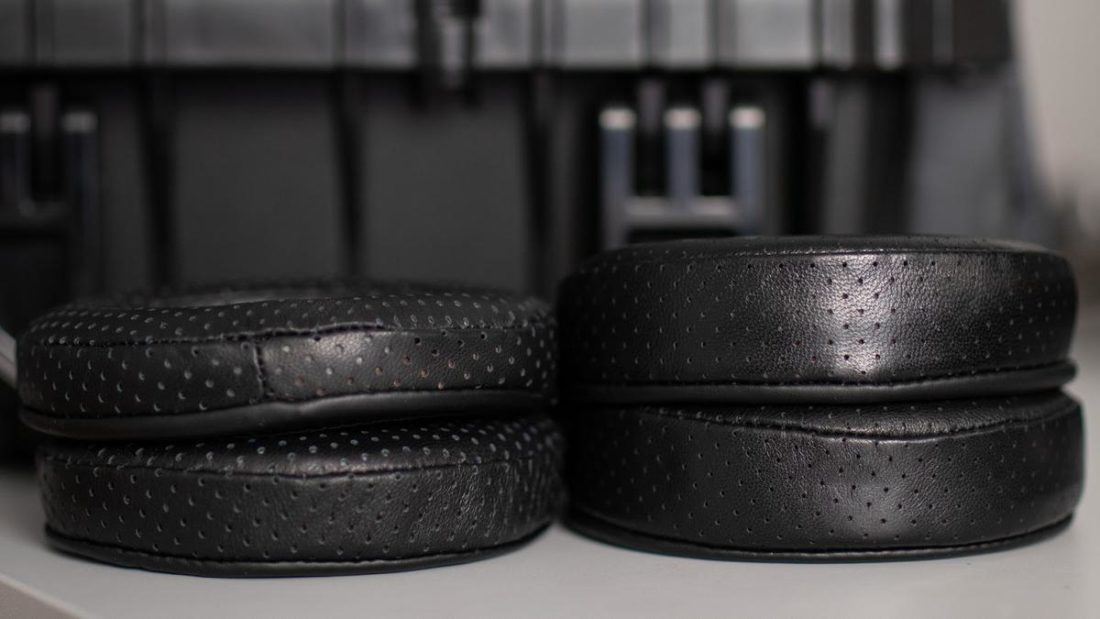
Be2 pads
The Be2 pads are uncomfortable compared to the stock pads and completely butcher the excellent staging of the Atrium. Not good news so far.
They do have a redeeming factor: better slam. If you want even harder-hitting bass, try these pads. Given the relative ease of pad swapping with the Atrium, if you want to turn up the bass without EQ, these are an option.
Auteur pads
The Auteur pads retain the staging capabilities and comfort of the stock pads but make the Atrium more recessed in the upper-mids. At the same time, the lower-treble gets a boost so things are somewhat balanced out. If you want an even darker sound than the stock Atrium, then these pads should fit your tastes well.
Comparisons
Vs ZMF Auteur
The ZMF Auteur are cult-classics in their own right. The design is fabulous and the comfort superb. I do think the Atrium look better mostly due to the intricate grille design. The Auteur and Atrium share the same ZMF DNA in terms of design, but the sound is where certain improvements can be noticed with the newer release.
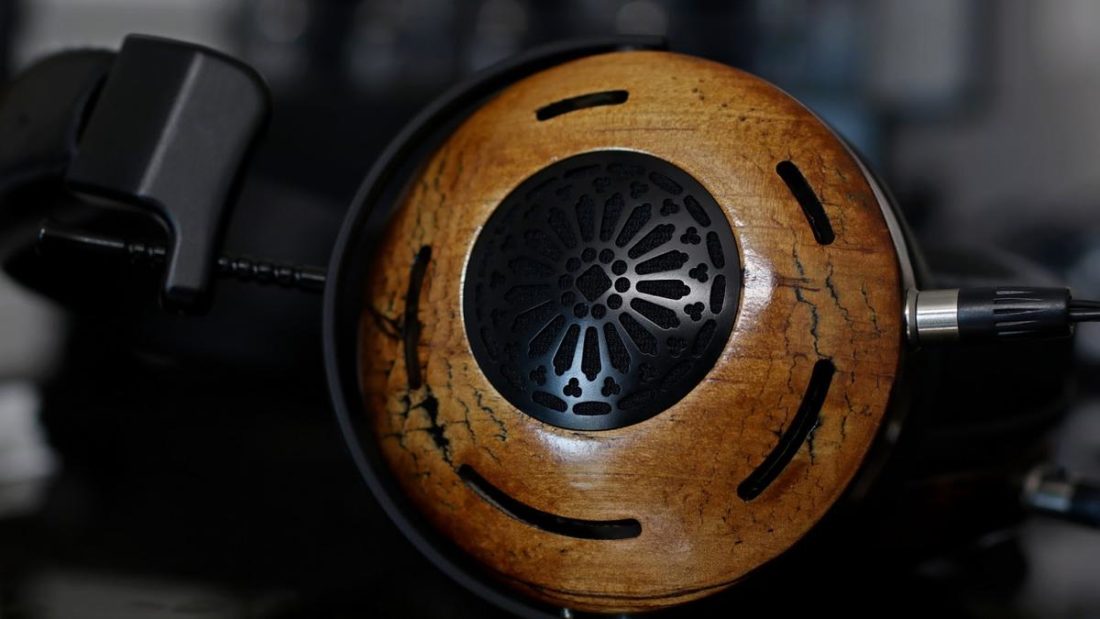
Whereas Auteur have a soundstage that has good depth and height but not so much width, the Atrium more noticeably spread out the instruments along the X-axis. This results in a better perception of the room size in live tracks, for example.
The upper-mids are more emphasized on the Atrium and so is the upper-treble. As a result, the Auteur sound more resolving and less congested. Bass is also faster and slams harder on the Atrium. Imaging is more precise. Instrument separation is better as well.
The Auteur are good headphones, but the Atrium are all-around better.
If you own an Auteur or were planning to buy one, I highly recommend giving the Atrium a listen.
Vs Meze Empyrean
Meze Empyrean are one of the few headphones that can trade blows with the Atrium in terms of design, build quality, and general usability. I do find the stock cable and carrying case of the Atrium to be superior in terms of practicality. The Empyrean strikes back with superior comfort and arguably a more striking design.
Sound is where they are further differentiated. Empyrean goes for more mid-bass emphasis than the Atrium with taller staging and slightly better instrument separation. The Atrium has superior midrange and an airier upper-treble. Imaging is about par on both. Due to better texture in bass and a more transparent midrange, I’d say the Atrium are more resolving than the Empyrean overall.
To summarize, for modern pop tracks and some rock songs, I’d probably go for the Empyrean. In all other cases, especially with vocal-centric tracks, the Atrium are the clear winner for me.
Vs Hifiman HE6se v2 (grille modded)
Hiifman HE6se V2 are priced in an odd manner. Sale prices are drastically lower than retail, but I had a pair in hand so I decided to compare them with the Atrium. Well, I am glad that I did.
In terms of build, accessories, comfort, the Atrium just blow past the HE6se V2, or any Hifiman on that regard. Hifiman headphones are not known for their build quality or accessories, so the
ZMF offering just runs away with the win here. In terms of sound though, things get interesting.
The HE6se V2 is a planar magnetic headphone with the old-style Hifiman dual-sided magnet array design. The popular grille mod consists basically of removing the driver grilles and this results in extended sub-bass, wider stage, and better midrange tonality. The HE6se V2 are also notoriously hard to drive, with many opting for speaker amps to power them.
Upon initial listen, the HE6se V2 are noticeably faster with a tighter bass slam and more resolving treble. Instrument separation is a tier above and so is microdynamics. The HE6se V2 are exceptional at rendering the “rawness” of distortion guitars. ZMF Atrium are not just tuned or engineered to highlight those aspects.
What the Atrium do better though is sheer analogue-ness of the entire presentation. Whereas the HE6se V2 sound overly processed at times, the Atrium never veer off of naturalness. Male vocals, string instruments, piano, and keyboards are more realistic on the Atrium, and they are more forgiving to poorly mastered tracks.
Most importantly, you don’t need a truckload of power for the Atrium. They can be driven well by most modern OTL tube amps or solid-state amps with a high voltage swing.
In a sense, the HE6se V2 and the Atrium are complimentary. I can see myself getting both and not bothering about a mythical endgame for a while, at least.
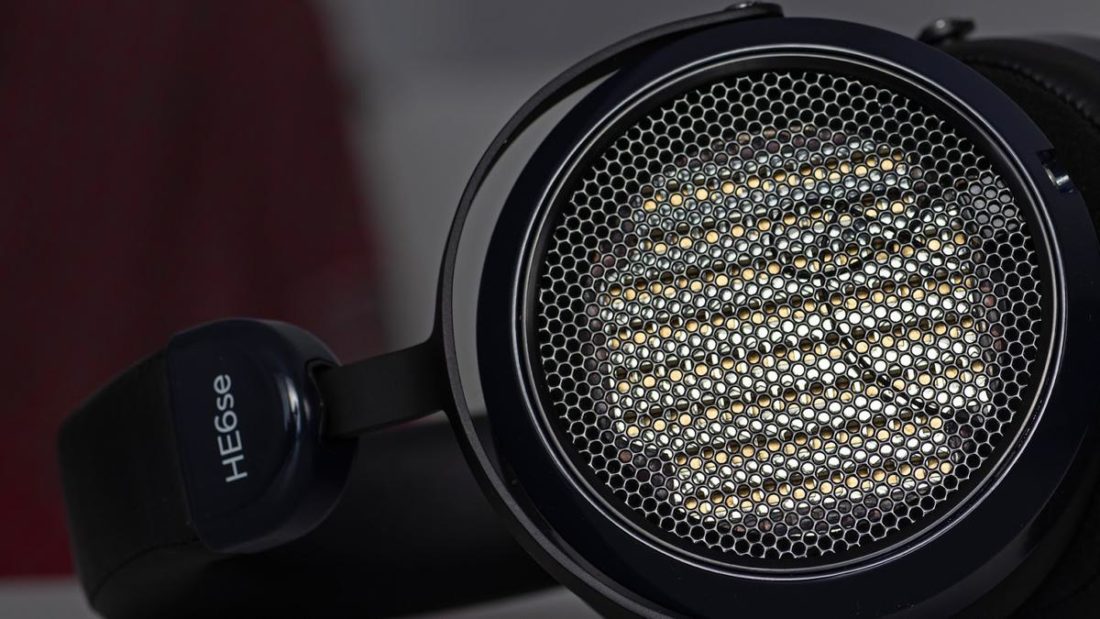
Where to Buy
Conclusion
The ZMF Atrium are not perfect. They have their shortcomings, namely the rolled-off sub-bass and somewhat muted mid-treble that hampers resolution. The driver can’t battle it out with super-fast planars or e-stats, nor do they have a speaker-like presentation that some headphones offer.
However, they have an exceedingly natural sound that borders on intoxicating, and you’ll keep coming back for more. The timbre, the lifelike tone of strings and keys, the atmospheric presentation, all coupled with the artisan build results in something exceptional.
For those who prefer the utmost resolution or dead-cold neutrality, the Atrium won’t appeal. However, for those who value naturalness and attention to detail – you are in for a treat.
Every masterpiece has its flaws, as do the ZMF Atrium. It’s just that those misgivings don’t make them any less of an accomplishment.
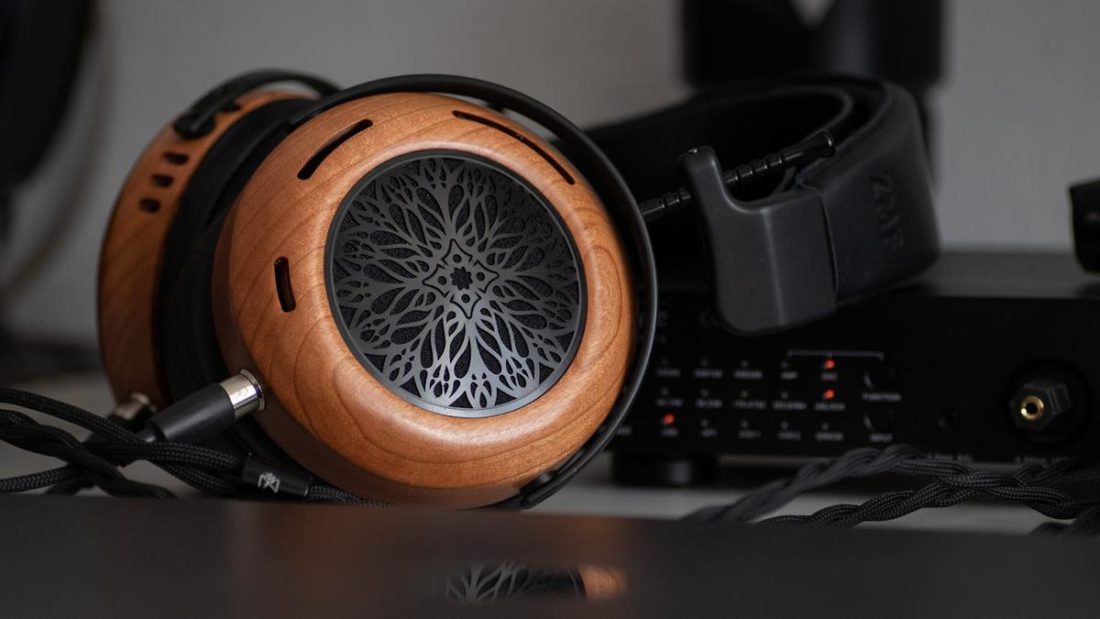
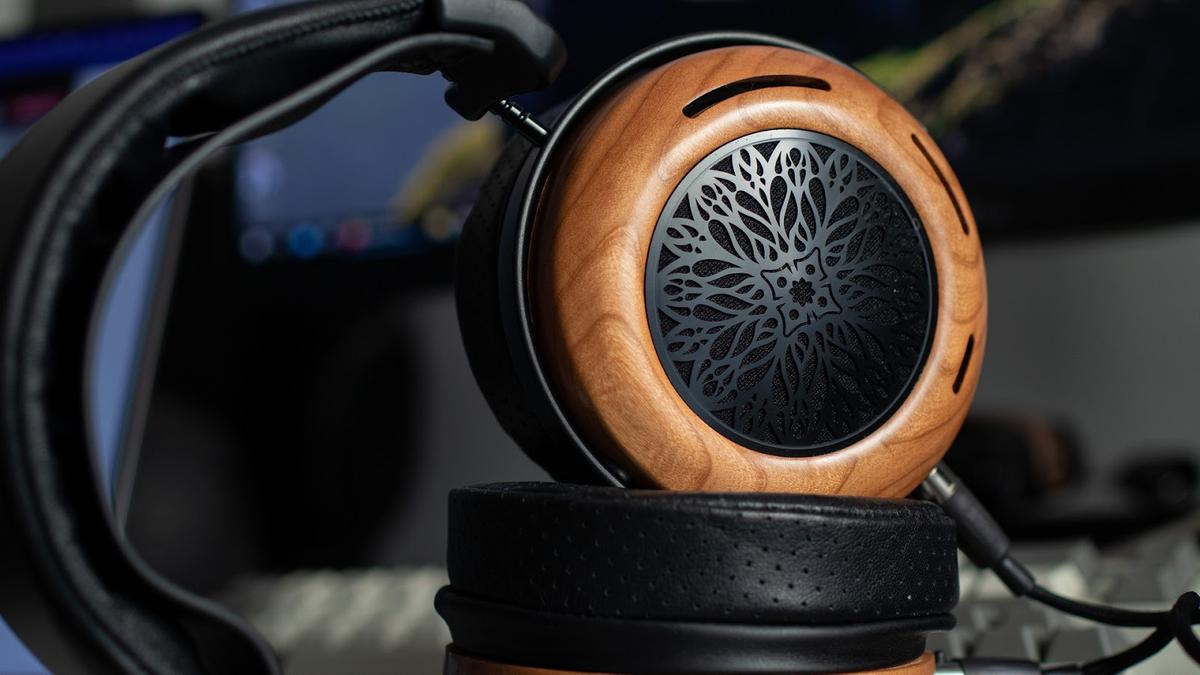
So, to put it more plainly, we have a headphone that has great mids and overall timbre, good staging and imaging, and beautiful looks. But at $2,600, it has insufficient detail retrieval, only decent sub-bass, and treble that’s rolled off too much. I can think of a number of headphones that, for $1,000 less, equal or exceed the Atrium’s performance on an overall basis.
Hi Bill,
The thing is, detail retrieval is often not the end-all be-all for many listeners, myself included. I’d rather have a smidgen less detail if the tuning is fun, engulfing… you get the gist.
The treble I won’t called too rolled off, and the bass actually becomes more robust when paired with OTL tube amps, something I will address soon (I will update this article with various tube amp pairings).
Nonetheless, there are some headphones around USD $1500 mark that will out-resolve the Atrium (e.g. Arya Stealth/V2) but those do not possess the tonal characteristics, artisan build, and most of all – timbre that the Atrium offers. Depends on what you prioritize.
sub-bass roll-off beyond 40kHz. Really! Proofreading?????
Hi, yeah that one missed my eyes, should definitely be 40Hz (though I am fairly certain it rolls off beyond 40kHz too haha).
I have been planning on updating this article with tube-amp pairings e.g. Feliks Envy, Echo mk.2 etc. Will be addressed when that update goes live.
Also have you tried the Caldera pads Zach is recommending, takes them up a notch…